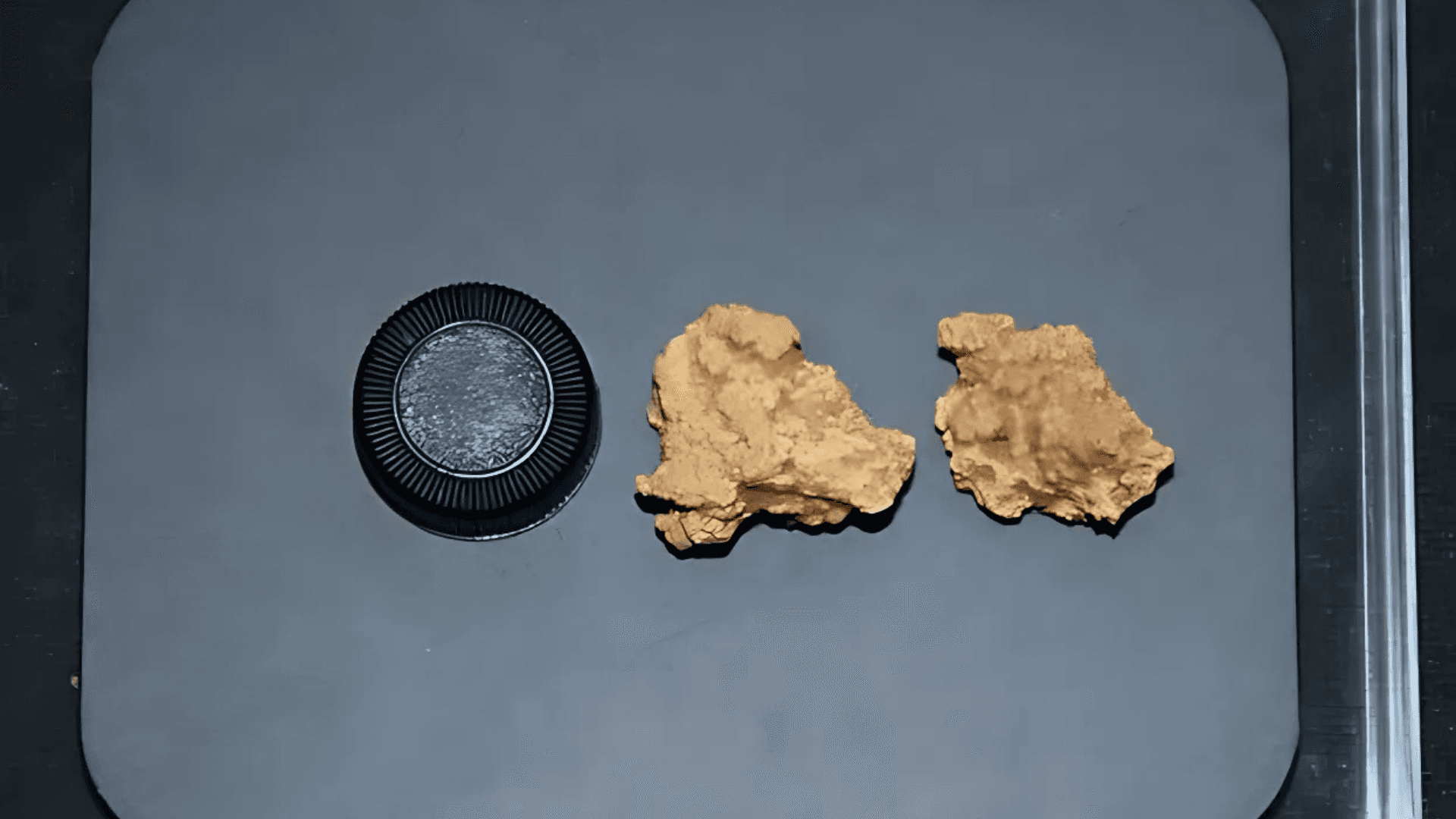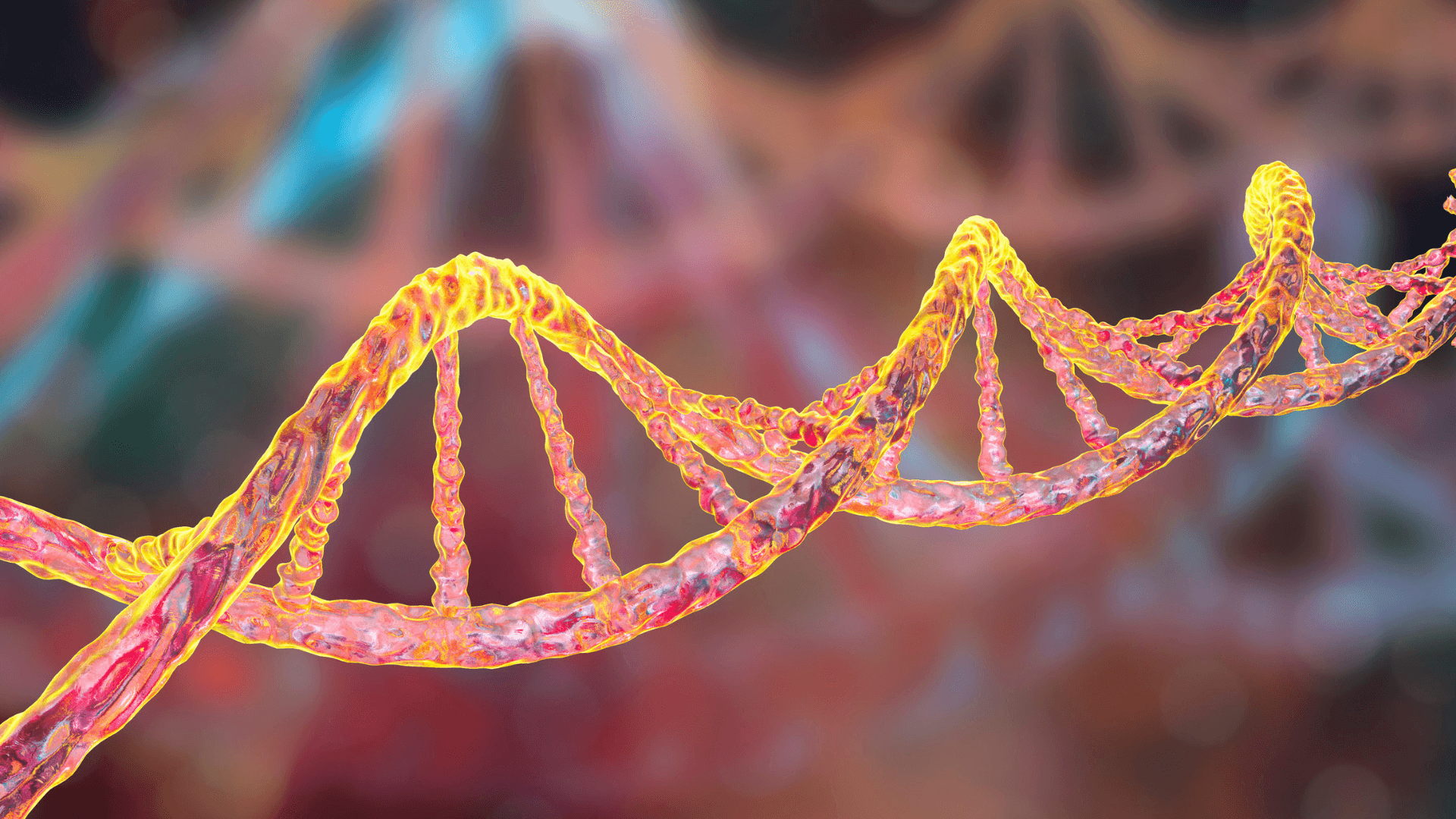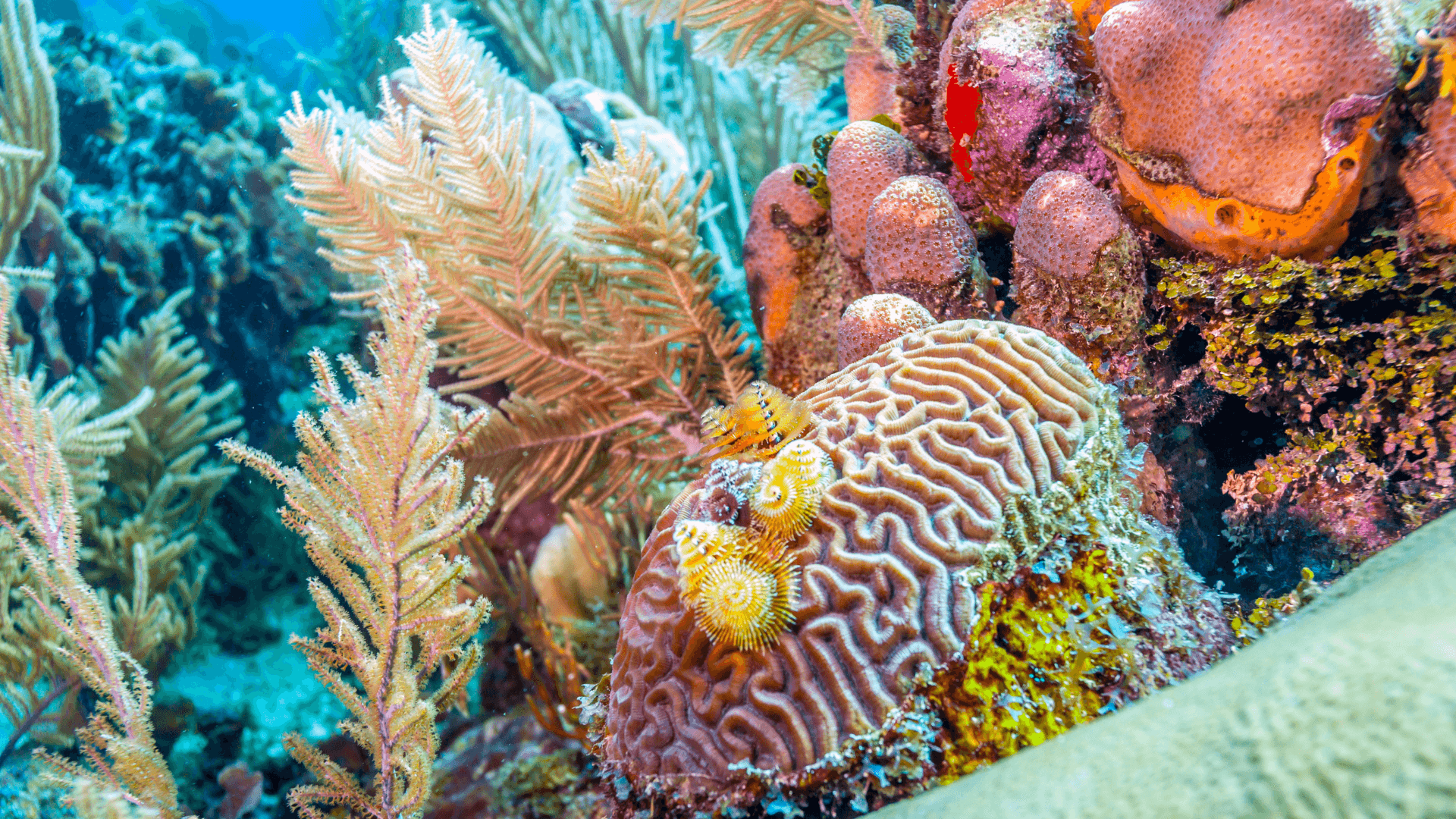Microplastics Detected in Ovarian Fluid: What Does This Mean for Human Fertility?
Microplastics Detected in Ovarian Fluid: What Does This Mean for Human Fertility?
Microplastics Detected in Ovarian Fluid: What Does This Mean for Human Fertility?
Apr 22, 2025
Apr 22, 2025

Illustrative image. Credit: Pavel Danilyuk, Pexels via Canva.
Illustrative image. Credit: Pavel Danilyuk, Pexels via Canva.
For the first time, scientists have identified microplastics in human ovarian follicular fluid. Understand the possible impacts on fertility and how to reduce exposure to these particles.
For the first time, scientists have identified microplastics in human ovarian follicular fluid. Understand the possible impacts on fertility and how to reduce exposure to these particles.
Italian researchers have made an alarming discovery: for the first time, microplastics have been found in human ovarian follicular fluid. The study, conducted in Salerno with 18 women undergoing fertility treatment, detected these synthetic particles in 14 of the 18 samples analyzed.
This finding marks a milestone in understanding the effects of plastic pollution on female reproductive health.
The Importance of Follicular Fluid
Follicular fluid plays a crucial role in reproduction, surrounding and nourishing the oocytes as they mature. It provides nutrients and biochemical signals that support successful fertilization. Microplastic presence in this delicate environment could impair oocyte quality and compromise fertilization.
Microplastics: Invisible Dangers
These tiny particles—under 5 millimeters in size—can carry up to 16,000 different chemical substances, many of which are harmful to human health. Among the most concerning substances are per- and polyfluoroalkyl substances (PFAS), commonly referred to as “forever chemicals,” along with bisphenols like BPA and phthalates. These compounds have been linked to cancer, neurotoxicity, hormone disruption, and fertility issues.
Moreover, microplastics are small enough to cross biological barriers, including the placenta and the blood-brain barrier.
What We Know So Far
This research is part of a broader project led by Dr. Luigi Montano, who has already identified microplastics in other human samples, such as urine and semen. Animal studies reinforce these concerns: in mice, microplastic exposure damaged ovarian tissue, reduced oocyte quality, and led to ovarian dysfunction.
These findings support the hypothesis that microplastic accumulation in the body may be directly related to reduced fertility.
Expert Perspectives
Professor Xiaozhong Yu of the University of New Mexico calls the discovery “highly significant” but emphasizes the need for larger studies. He advocates investigating human exposure levels and their long-term effects on reproductive health. Researchers are also exploring lifestyle and dietary changes to mitigate these impacts.
How to Reduce Exposure to Microplastics
You can take simple steps to lower your daily exposure:
Avoid heating food in plastic containers or storing hot foods and beverages in plastic, as heat promotes particle release.
Choose utensils made of glass, stainless steel, or wood, which are safer and more durable.
Skip disposable paper cups with plastic linings, which can release trillions of particles when in contact with hot liquids, and plastic tea bags, known to shed billions of microplastics into infusions.
Opt for organic produce when possible, since some conventional pesticides contain microplastic additives.
By making these changes, you can significantly reduce your ingestion of microplastics and protect your reproductive health.
—
Want to learn more about the impact of this discovery and the associated risks? Read The Guardian’s full article here.
Italian researchers have made an alarming discovery: for the first time, microplastics have been found in human ovarian follicular fluid. The study, conducted in Salerno with 18 women undergoing fertility treatment, detected these synthetic particles in 14 of the 18 samples analyzed.
This finding marks a milestone in understanding the effects of plastic pollution on female reproductive health.
The Importance of Follicular Fluid
Follicular fluid plays a crucial role in reproduction, surrounding and nourishing the oocytes as they mature. It provides nutrients and biochemical signals that support successful fertilization. Microplastic presence in this delicate environment could impair oocyte quality and compromise fertilization.
Microplastics: Invisible Dangers
These tiny particles—under 5 millimeters in size—can carry up to 16,000 different chemical substances, many of which are harmful to human health. Among the most concerning substances are per- and polyfluoroalkyl substances (PFAS), commonly referred to as “forever chemicals,” along with bisphenols like BPA and phthalates. These compounds have been linked to cancer, neurotoxicity, hormone disruption, and fertility issues.
Moreover, microplastics are small enough to cross biological barriers, including the placenta and the blood-brain barrier.
What We Know So Far
This research is part of a broader project led by Dr. Luigi Montano, who has already identified microplastics in other human samples, such as urine and semen. Animal studies reinforce these concerns: in mice, microplastic exposure damaged ovarian tissue, reduced oocyte quality, and led to ovarian dysfunction.
These findings support the hypothesis that microplastic accumulation in the body may be directly related to reduced fertility.
Expert Perspectives
Professor Xiaozhong Yu of the University of New Mexico calls the discovery “highly significant” but emphasizes the need for larger studies. He advocates investigating human exposure levels and their long-term effects on reproductive health. Researchers are also exploring lifestyle and dietary changes to mitigate these impacts.
How to Reduce Exposure to Microplastics
You can take simple steps to lower your daily exposure:
Avoid heating food in plastic containers or storing hot foods and beverages in plastic, as heat promotes particle release.
Choose utensils made of glass, stainless steel, or wood, which are safer and more durable.
Skip disposable paper cups with plastic linings, which can release trillions of particles when in contact with hot liquids, and plastic tea bags, known to shed billions of microplastics into infusions.
Opt for organic produce when possible, since some conventional pesticides contain microplastic additives.
By making these changes, you can significantly reduce your ingestion of microplastics and protect your reproductive health.
—
Want to learn more about the impact of this discovery and the associated risks? Read The Guardian’s full article here.
Italian researchers have made an alarming discovery: for the first time, microplastics have been found in human ovarian follicular fluid. The study, conducted in Salerno with 18 women undergoing fertility treatment, detected these synthetic particles in 14 of the 18 samples analyzed.
This finding marks a milestone in understanding the effects of plastic pollution on female reproductive health.
The Importance of Follicular Fluid
Follicular fluid plays a crucial role in reproduction, surrounding and nourishing the oocytes as they mature. It provides nutrients and biochemical signals that support successful fertilization. Microplastic presence in this delicate environment could impair oocyte quality and compromise fertilization.
Microplastics: Invisible Dangers
These tiny particles—under 5 millimeters in size—can carry up to 16,000 different chemical substances, many of which are harmful to human health. Among the most concerning substances are per- and polyfluoroalkyl substances (PFAS), commonly referred to as “forever chemicals,” along with bisphenols like BPA and phthalates. These compounds have been linked to cancer, neurotoxicity, hormone disruption, and fertility issues.
Moreover, microplastics are small enough to cross biological barriers, including the placenta and the blood-brain barrier.
What We Know So Far
This research is part of a broader project led by Dr. Luigi Montano, who has already identified microplastics in other human samples, such as urine and semen. Animal studies reinforce these concerns: in mice, microplastic exposure damaged ovarian tissue, reduced oocyte quality, and led to ovarian dysfunction.
These findings support the hypothesis that microplastic accumulation in the body may be directly related to reduced fertility.
Expert Perspectives
Professor Xiaozhong Yu of the University of New Mexico calls the discovery “highly significant” but emphasizes the need for larger studies. He advocates investigating human exposure levels and their long-term effects on reproductive health. Researchers are also exploring lifestyle and dietary changes to mitigate these impacts.
How to Reduce Exposure to Microplastics
You can take simple steps to lower your daily exposure:
Avoid heating food in plastic containers or storing hot foods and beverages in plastic, as heat promotes particle release.
Choose utensils made of glass, stainless steel, or wood, which are safer and more durable.
Skip disposable paper cups with plastic linings, which can release trillions of particles when in contact with hot liquids, and plastic tea bags, known to shed billions of microplastics into infusions.
Opt for organic produce when possible, since some conventional pesticides contain microplastic additives.
By making these changes, you can significantly reduce your ingestion of microplastics and protect your reproductive health.
—
Want to learn more about the impact of this discovery and the associated risks? Read The Guardian’s full article here.

Share on:
See Also
See Also

Microplastics Detected in Ovarian Fluid: What Does This Mean for Human Fertility?
Apr 22, 2025

Humanitarian Crisis in Myanmar: Millions Need Aid After Devastating Earthquakes
Apr 21, 2025

Life on Another Planet? Life-Linked Gas Detected on Exoplanet K2-18b
Apr 18, 2025

Dire Wolves Recreated? Meet the Genetically Modified Animals from Colossal Biosciences
Apr 11, 2025

Digital Security and Artificial Intelligence: Solutions and Challenges in 2025
Apr 3, 2025

Cardiovascular Health in Rural Communities: Study Reveals Impacts of Social Factors
Apr 1, 2025

Unexpected Heat Marks the First Day of Spring 2025 in the United Kingdom: A Sign of Climate Change?
Mar 21, 2025

DeepSeek AI: The Chinese Chatbot That Is Shaking Up the Global Market
Feb 7, 2025

Study Reveals That an Active Social Life Can Reduce Dementia Risk
Feb 4, 2025

Lunar New Year 2025: The Arrival of the Year of the Snake
Jan 30, 2025

New Hypothesis on the Origin of Dinosaurs Challenges Traditional Concepts
Jan 27, 2025

Emotions and the Human Body: Millennia-Old Connections in Neo-Assyrian Texts
Dec 20, 2024

Study Links Air Pollution to Risk of Venous Thromboembolism
Dec 20, 2024

Potentially Habitable Environment on Mars Discovered by Perseverance
Dec 20, 2024

Collapse of the Conger Ice Shelf: Alert for East Antarctica
Dec 20, 2024

Revolution XRISM: New Discoveries About Supermassive Black Holes
Oct 15, 2024

Study Shows that Duplication of the AMY1 Gene, Related to Starch Digestion, Predates Agriculture
Oct 14, 2024

Births in the EU Fall Below 4 Million for the First Time Since 1960
Oct 11, 2024

Excavation in Denmark Reveals 50 Incredibly Preserved Viking Skeletons
Oct 10, 2024

Study Indicates Higher Incidence of Asthma and Allergic Rhinitis in People Born in Autumn and Winter in Finland
Oct 9, 2024

Study Demonstrates Similarities Between Ice Age Adolescents' Puberty and Modern Youth
Oct 8, 2024

DNA Analysis in 3,600-Year-Old Chinese Mummies Reveals World's Oldest Cheese
Oct 7, 2024

Study Reveals Genetic Stability of Southern African Populations Over 10 Millennia
Oct 4, 2024

Nine Mythical Places That May Have Existed, According to Archaeological Discoveries
Oct 3, 2024

How Human Rights Can Save Coral Reefs and Hold Governments Accountable
Oct 2, 2024

Carbon Brief Report Indicates 2024 Could Be the Hottest Year on Record
Sep 4, 2024

Climate Determines Mammal Distribution, Reveals Study by North Carolina State University
Sep 4, 2024

Study Suggests Fossil 'Hotspots' in Africa Distort Our View of Human Evolution
Sep 3, 2024

Unusual Noise on Boeing's Starliner Puzzles NASA Astronaut
Sep 3, 2024

Study Reveals Human Microbiome is Highly Individualized
Sep 2, 2024

Share on:

Share on:

Microplastics Detected in Ovarian Fluid: What Does This Mean for Human Fertility?
Apr 22, 2025

Humanitarian Crisis in Myanmar: Millions Need Aid After Devastating Earthquakes
Apr 21, 2025

Life on Another Planet? Life-Linked Gas Detected on Exoplanet K2-18b
Apr 18, 2025

Dire Wolves Recreated? Meet the Genetically Modified Animals from Colossal Biosciences
Apr 11, 2025

Digital Security and Artificial Intelligence: Solutions and Challenges in 2025
Apr 3, 2025

Cardiovascular Health in Rural Communities: Study Reveals Impacts of Social Factors
Apr 1, 2025

Unexpected Heat Marks the First Day of Spring 2025 in the United Kingdom: A Sign of Climate Change?
Mar 21, 2025

DeepSeek AI: The Chinese Chatbot That Is Shaking Up the Global Market
Feb 7, 2025

Study Reveals That an Active Social Life Can Reduce Dementia Risk
Feb 4, 2025

Lunar New Year 2025: The Arrival of the Year of the Snake
Jan 30, 2025

New Hypothesis on the Origin of Dinosaurs Challenges Traditional Concepts
Jan 27, 2025

Emotions and the Human Body: Millennia-Old Connections in Neo-Assyrian Texts
Dec 20, 2024

Study Links Air Pollution to Risk of Venous Thromboembolism
Dec 20, 2024

Potentially Habitable Environment on Mars Discovered by Perseverance
Dec 20, 2024

Collapse of the Conger Ice Shelf: Alert for East Antarctica
Dec 20, 2024

Revolution XRISM: New Discoveries About Supermassive Black Holes
Oct 15, 2024

Study Shows that Duplication of the AMY1 Gene, Related to Starch Digestion, Predates Agriculture
Oct 14, 2024

Births in the EU Fall Below 4 Million for the First Time Since 1960
Oct 11, 2024

Excavation in Denmark Reveals 50 Incredibly Preserved Viking Skeletons
Oct 10, 2024

Study Indicates Higher Incidence of Asthma and Allergic Rhinitis in People Born in Autumn and Winter in Finland
Oct 9, 2024

Study Demonstrates Similarities Between Ice Age Adolescents' Puberty and Modern Youth
Oct 8, 2024

DNA Analysis in 3,600-Year-Old Chinese Mummies Reveals World's Oldest Cheese
Oct 7, 2024

Study Reveals Genetic Stability of Southern African Populations Over 10 Millennia
Oct 4, 2024

Nine Mythical Places That May Have Existed, According to Archaeological Discoveries
Oct 3, 2024

How Human Rights Can Save Coral Reefs and Hold Governments Accountable
Oct 2, 2024

Carbon Brief Report Indicates 2024 Could Be the Hottest Year on Record
Sep 4, 2024

Climate Determines Mammal Distribution, Reveals Study by North Carolina State University
Sep 4, 2024

Study Suggests Fossil 'Hotspots' in Africa Distort Our View of Human Evolution
Sep 3, 2024

Unusual Noise on Boeing's Starliner Puzzles NASA Astronaut
Sep 3, 2024

Study Reveals Human Microbiome is Highly Individualized
Sep 2, 2024
